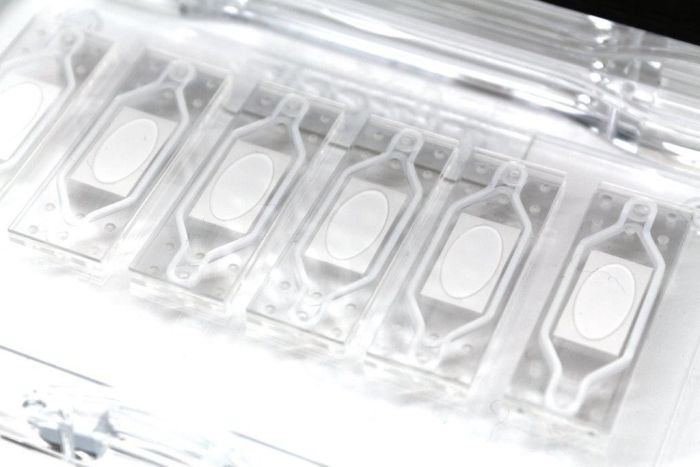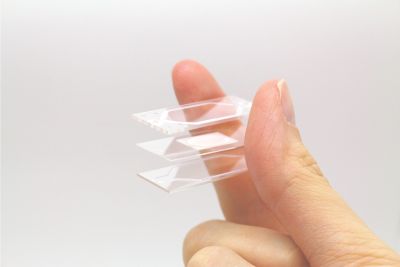shopping_basket
Organ-on-a-chip top and bottom layers
SKU
11000739
Availability:
check_circle In stock
$892.36
per pack of 4
Pack with resealable glass slides that form the top and bottom layers for organ-on-a-chip devices. This pack contains 4 top and 4 bottom layers.
Two resealable glass slides that form the top and bottom layers for organ-on-a-chip devices. When the is placed in between these top and bottom layers, two separate flow chambers are formed. With this item, use the .
The organ-on-a-chip top and bottom layers are intended for low pressure aplications, up to 300-400mbar. It's strongly recommend to use a pump system with addequate pressure control to assure the pressure will not exceed this value or use a pressure relieve valve.
| Unit of measurement | pack of 4 |
|---|---|
| Interface type | Topconnect |
| Carrier thickness | 0.4mm |
| Carrier material | Borosilicate glass |
| Membrane material | PET |
| Membrane appearance | Transparent |
| Membrane surface treatment | Cell culture treated |
| Icon | Label | Description | Type | Size | Download |
|---|---|---|---|---|---|
 | Organ-on-a-chip manual | Manual that helps to get started with OOC using the resealable platform. | 1.5 MB | Download | |
 | Organ-on-a-chip drawing | 118.4 KB | Download | ||
 | Compatibility with cell imaging systems | 153.1 KB | Download |
Customer Questions
We found other products you might like!
- OOC setup (no pumps included)
From $4,869.10
To $9,515.41



